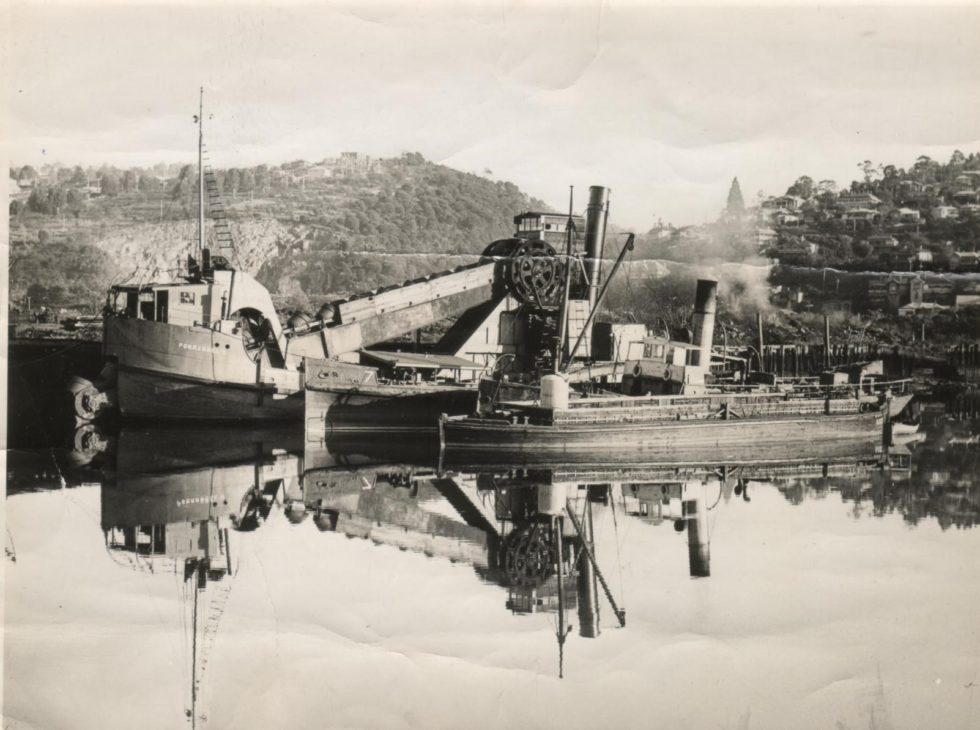Our History
The Ponrabbel
The first vessel to enter the new William Hart dry dock was the Marine Board’s dredge Ponrabbel II, as the wooden floating dock was becoming too old and unstable for further dockings. Ponrabbel II had regular maintenance work done on her by Glasgow Engineering. Boiler valves,driving gears, bucket and chain repairs were all part of her yearly maintenance schedule. On her first visit into the dry dock, some of the bottom plates had to be repaired and replaced. The large driving gears, approximately 7 ft in diameter were removed to have the keyways widened out, and new keys fitted to the shaft as they were slogged out. These driving gears were very heavy, and could only be man handled out of the engine room using chain blocks.
On the April 7 1920, Ponrabbel II left Glasgow, Scotland and after an eventful trip, running on rocks of the coast of Portugal, arrived at Low Head on the April 6 1921. The actual steaming time was 87 days and she burnt 765 tons of coal. On arriving at the Tamar River, the long range plans that were made, revered to as the Tamar Improvement Scheme, were carried out. These included the creation of a deep water port at Bell Bay, the diversion of the river at Stephenson’s Bend and the removal of obstructions such as the Garrow and Porpoise Rocks. The Ponrabbel’s machinery consisted of two sets of surface condensing engines with inverted cylinders capable of acting independently when propelling the vessel , and of working together when dredging. Two cylindrical marine multitubular boilers each 10 ft in diameter and 10 ft long that had a working pressure of 130 lbs per square inch. In 1964 her boilers were converted from coal to oil fire. The Ponrabble II was an essential item of equipment for the Marine Board of Launceston and she was decommissioned after around 60 years of service. The Marine Board of Launceston changed its name to the Port of Launceston Authority in 1968.

































